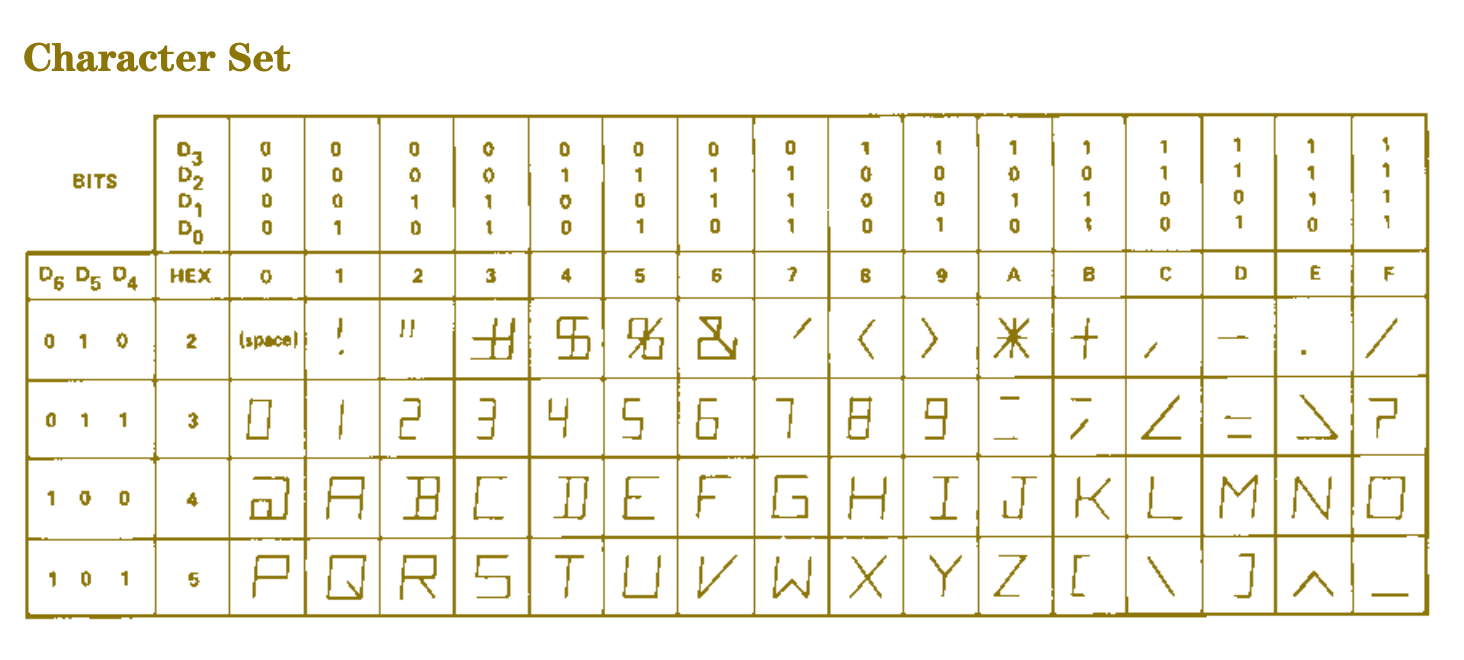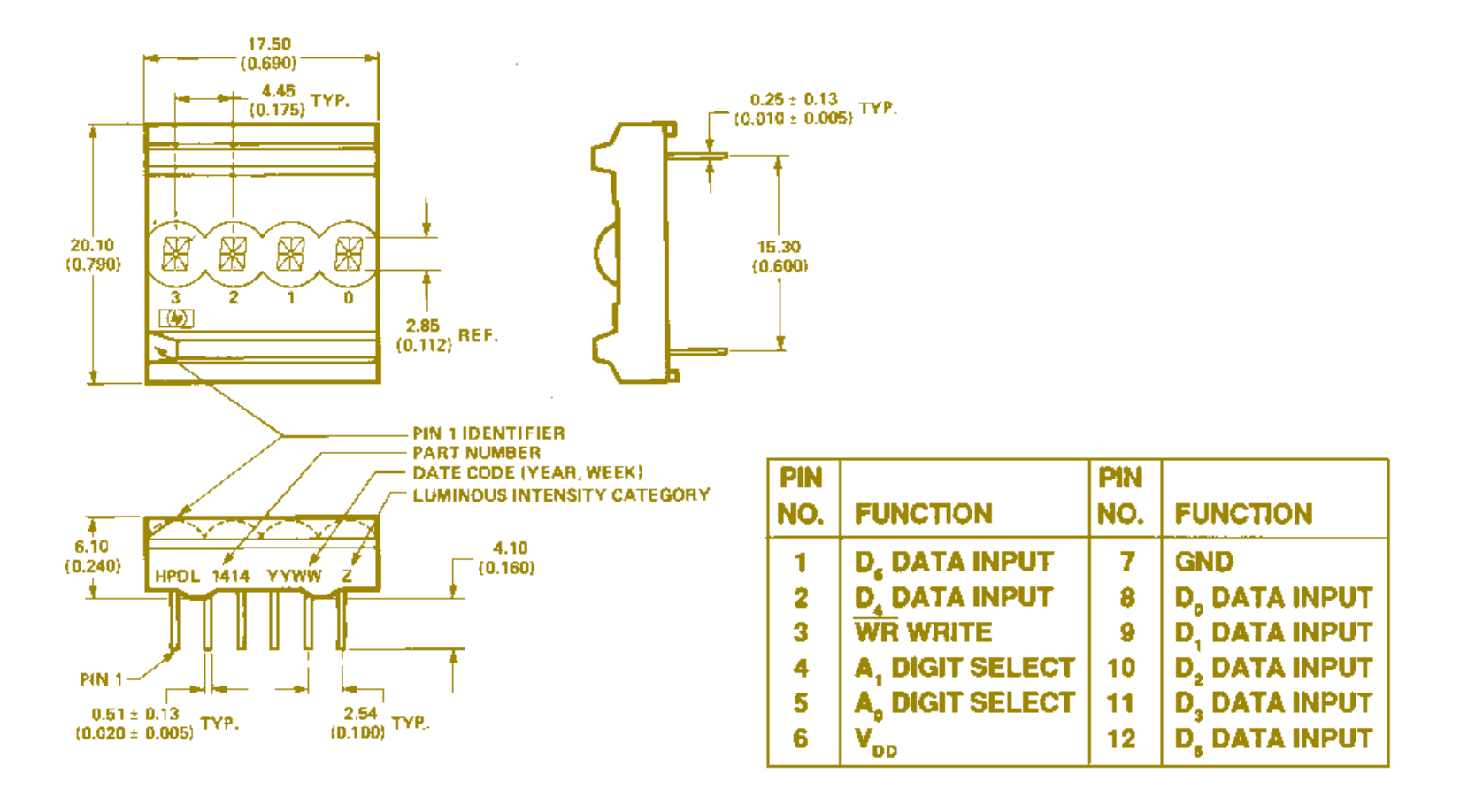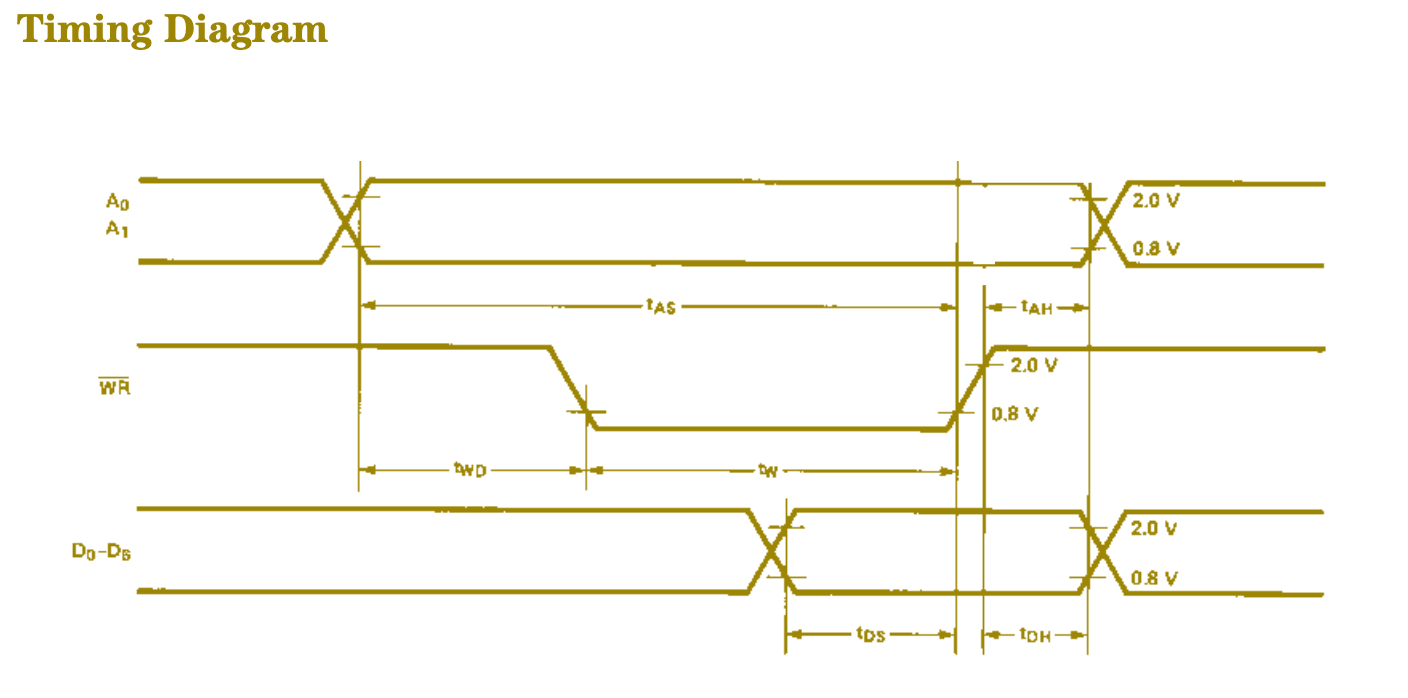I was drawn to LEDs and old-school displays early on. One day, while browsing online, I came across bubble displays—particularly the beautiful HPDL-1414 alphanumeric displays. The aesthetics of these retro LEDs immediately caught my attention, and I knew I wanted to build something with them.
This is how my simple and fun project started. It’s a small, solder-friendly design that combines my passion for retro tech with modern usability.
The HPDL-1414 displays are both visually appealing and surprisingly easy to use. They’re smart displays, featuring an embedded character ROM that allows you to send simple 7-bit ASCII codes to display text.

source : https://www.farnell.com/datasheets/76528.pdf

By manually sending the data to data bus D0-D7 pins, and Digit position on A0-A1, charts can be already put on display.

source : https://www.farnell.com/datasheets/76528.pdf
This simplicity makes the HPDL-1414 perfect for debugging, displaying outputs for FPGAs, or building devices using those retro led displays.
Prototype 0 conected to 595 shift registers and Arduino board.
The PMOD Board Design
To combine functionality with ease of use, I designed a small PMOD-compatible board that houses the HPDL-1414 displays.
The board connects using two 12-pin PMOD connectors, making it ideal for use with FPGAs or microcontrollers. It’s simple, compact, and efficient—exactly what I wanted for a retro display module.
Pcbs arrived, and after very delightful and sort soldering process its ready to be tested
 Andrew Tudoroi
Andrew Tudoroi
Discussions
Become a Hackaday.io Member
Create an account to leave a comment. Already have an account? Log In.